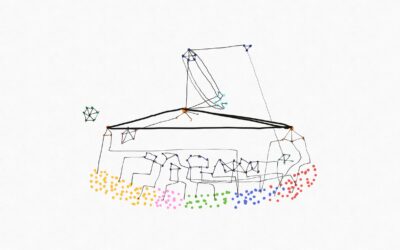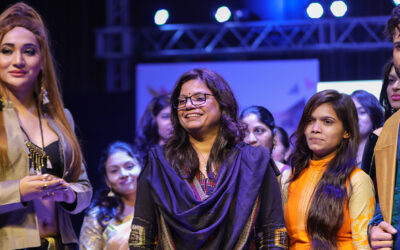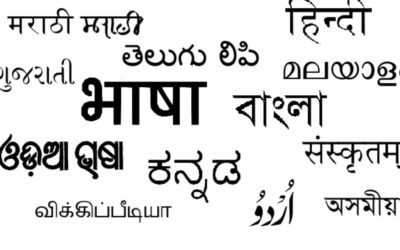A gender lens to understand credit in rural India
Microcredit = Lending to women in groups
I remember making sense of microfinance using this simple equation the first time I read about the concept of lending to the poor. Somehow, it did make a lot of sense and it became an idea I was totally captivated with. Today, in most parts of India and the world, micro-credit and lending to the poor is done by forming SHGs (Self Help Groups) or JLGs (Joint Liability Groups). Simply put, an SHG is a group of women who come together to pool their savings and borrow from the fund when the need arises. A JLG, on the other hand, is usually a smaller group of people who come together to avail credit from a formal institution without collateral.
These groups are usually formed by women who know each other, belong to the same community and/or the same socio-economic group, and live in the same locality. One could say that a group is often homogenous in these terms. It consists anywhere between 4-20 members. Conventionally, the group based lending model has been popular among lending institutions. The primary reasons are:
- Ease of management: Lending to individual customers and managing them is a much more complex process than lending to a group. The former also increases the cost of operations. The ticket size and purpose of the loan is usually similar for all the members in the group, thus making loan disbursement and recovery smoother.
- Mutual Guarantee for the loan: Since the poor are typically considered un-bankable, the members of the group act as mutual guaranteers for each other and hence reduce the risk for the lender.
This group lending model has been the norm for the longest time with much “success” in terms of repayment rates, increasing client’s ability to borrow and financial inclusion of millions of formal finance deprived communities.
In the last few years we have seen a steady increase in the participation of women in availing micro-credit in rural areas of South Rajasthan, fuelled by the increase in number of credit giving institutions operating there. While overall it can be stated that the “access” part of the problem is being solved gradually, the impact of this increase in credit taking can be seen in most of the families we interact and deal with, on a regular basis.
Understanding women’s relationship with credit
As part of our financial inclusion and literacy program at Shram Sarathi, we recently conducted a discussion with members from the Ujala Samuh (a women’s solidarity group which was started by Aajeevika Bureau) to discuss their experience of partaking in group based credit activities. Through a series of interactions, we tried to unpack their relationship with credit, credit institutions and lending groups.
The meeting started with a round of introductions. Some women, in the presence of two strangers (one male among them) turned reluctant to tell their name or share where they were from. The relatively active members tried to coerce them to speak up, but to no avail.
Need Identification
We began with a simple exercise to understand the kinds of needs that arise for which women borrow money in their everyday life. Getting them to speak, especially about their financial lives turned out to be a bit challenging. The answers about the purpose of borrowing ranged from “makaan banane ke liye, kuan khudvane ke liye, khet samtal karvana hai, dukaan mein saamaan dalvana hai“ to muffled admissions of “purani udhaari chukaani hai and bachhe ka vivah karna hai“. Clearly, each woman gave a different answer and there was variety in the purpose stated.
Credit Utilisation
In continuation of the activity, we asked the women to imagine and share with us how they would utilise the money if they received a loan instantly. As the women began answering one after the other, they started echoing each other’s answers. One woman started by saying “makaan ka kaam“ and most of the other women, barring a few, gave the same response. Through the course of the conversation we realised that because they were present in a group in front of two people who were speaking to them about a loan, they were felt pressured into saying the same answers, conscious of how we would judge them and sceptical that saying something different might lead to cancellation of the loan.
Repayment Capacity
Further, through a household income and expense listing activity, we tried to bring the focus of the group on the repayment capacity. While some women had no active loans, some had up to three loans from formal and informal sources. We asked them to state how much they would be able to repay every month for a fictitious loan of Rs. 30,000. The answers varied from Rs. 1,000 to Rs. 2,500 per month. However, most micro-finance loans of a similar ticket size have the same monthly repayments, ignoring the heterogeneity of the financial position of the borrower.
A women exclaimed “kisht ni bhar paaye toh faasi khaani pade, aur kai!”. Here, in cases such as these, unfortunately the women of the group are forced to create pressure on those who miss their repayments due to their inability to pay.
Managing systemic pressures
These simple exercises not only highlighted the flaws that a typical micro-finance lending module is prone to, but also made us recognise the pressures that mostly women have to face as the primary borrowers. While partaking in credit and micro-finance activity is a household’s personal choice, certain systems directly or indirectly force some communities, especially credit starved ones to make sub-optimal decisions without complete disclosure about the implications of the same.
Firstly, women may be coerced into taking a loan even if they are not in need of one due to their inability to say no to their fellow women borrowers who desperately need a loan and are required to form a group to get one. This coercion also leads them into sometimes taking a loan which may be inadequate or excessive.
Secondly, the responsibility of repayment too, rests with women as men are usually uninvolved in the repayment process of most microfinance loans. However, men might still hold the power to influence women into taking a loan for a purpose which is not mutually beneficial or take up a loan without adequate knowledge about the utilisation of the funds.
Thirdly, the inability to repay on time impacts the interpersonal relationships among members in the community, causing women to lose a solidarity space over time. The risk of being socially excluded is too high for women who may find it difficult to repay the loans along with other group members. When ten women from your village come to your doorstep asking for money, it inevitably impacts the mental and emotional wellbeing.
More women than men are at the forefront of facing the consequences of this form of credit system, causing a disruption in their personal and community life. While participation in credit taking empowers women to take decisions and have control over their finances, exclusion of men from the system makes women face the brunt of the decisions, often alone.
Credit institutions therefore, need to create a space which allows women to assess their credit needs and repayment capacities in a free and open manner. Smaller groups too, will allow women to make better decisions regarding accessing credit and consequently ensure better financial discipline among borrowers.




0 Comments